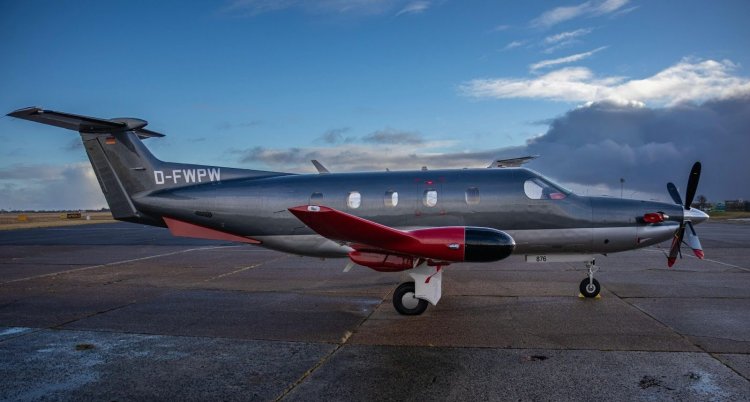The Transformative Role of Business Jets in Shaping Global Connectivity
Business jets are key to global commerce, emergency response, and innovation. Learn how they enhance efficiency, access, and strategic mobility.

In today's hyper-connected world, business jets have emerged as indispensable tools for global commerce, diplomacy, and humanitarian efforts. Far beyond symbols of luxury, these sophisticated aircraft have fundamentally altered how businesses and governments operate across continents, creating an intricate web of aerial connections that commercial airlines cannot replicate.
This deep dive explores how business aviation has become the backbone of modern global connectivity and why its importance continues to grow in our increasingly decentralized economy.
1. The Unmatched Efficiency of Business Aviation
Business jets provide solutions to three critical challenges in global transportation:
-
Time Optimization: Where commercial flights might require 12+ hours for connections between secondary cities, business jets can accomplish the same journey in half the time with direct routing. A CEO can attend morning meetings in Detroit and evening negotiations in Stuttgart without overnight stays.
-
Accessibility: Approximately 10,000 airports worldwide accept business jets, compared to just 500 served by major commercial airlines. This means direct access to manufacturing plants, mining operations, and corporate facilities located far from major hubs.
-
Productivity: The "office in the sky" concept has become reality. Modern business jets like the Bombardier Global 7500 offer secure video conferencing, high-speed internet, and proper workspaces that make travel time productive rather than wasted.
2. Economic Multiplier Effect
The business aviation sector generates staggering economic benefits:
-
Job Creation: Every business jet in operation supports 1,100 jobs across manufacturing, maintenance, and support services. In Wichita, Kansas alone (the "Air Capital of the World"), aviation accounts for 40% of local employment.
-
Supply Chain Impact: A single Gulfstream G650 contains over 300,000 parts sourced from 800+ suppliers across 30 countries, creating a complex web of economic interdependence.
-
Corporate ROI: Studies show companies utilizing business aviation outperform peers by 219% in market capitalization growth over 15 years, proving these are strategic investments rather than luxuries.
3. Humanitarian and Emergency Response Capabilities
When disaster strikes or medical emergencies occur, business jets often serve as first responders:
-
Air Ambulances: Specially configured jets like the Learjet 75 Liberty can transport ICU-level medical equipment and teams to remote locations worldwide.
-
Disaster Relief: During the 2020 Australian wildfires, business jets delivered firefighters and equipment to 37 regional airstrips inaccessible to larger aircraft.
-
Diplomatic Mobility: Government-operated business jets enable rapid response to international crises, such as the evacuation of citizens from conflict zones.
4. Technology Incubators
Business jets consistently pioneer innovations that later benefit all aviation:
-
Materials Science: The widespread use of carbon fiber composites in business jets like the Dassault Falcon 8X paved the way for their adoption in Boeing's 787 Dreamliner.
-
Avionics: Advanced systems like Garmin's Autoland (first certified in the Cirrus SF50) are now being adapted for commercial aircraft.
-
Sustainability: Business aviation leads in testing sustainable aviation fuels (SAFs), with over 50% of flights now capable of using eco-friendly fuel blends.
5. The Future Landscape
Several trends are reshaping business aviation's role:
-
Urban Air Mobility: Electric vertical takeoff aircraft (eVTOLs) will extend business jet networks directly to urban centers.
-
Supersonic Revival: Companies like Boom Supersonic aim to cut transatlantic flight times to 3.5 hours by 2029.
-
Digital Integration: Blockchain technology is being tested for streamlined international flight clearances and maintenance tracking.
For aviation enthusiasts and professionals alike, examining airplane models for sale can provide fascinating insights into these technological advancements. Many engineers use plane modeling techniques to study and demonstrate aerodynamic innovations before they're implemented in full-scale aircraft.
Conclusion: The Indispensable Network
Business jets have evolved from luxury transport to vital components of global infrastructure. They enable:
-
Corporations to manage dispersed operations
-
Governments to respond to crises
-
Medical teams to reach emergencies
-
Technologies to mature before widespread adoption
As the world becomes more interconnected yet simultaneously more decentralized, the strategic importance of business aviation will only intensify. These aircraft don't just reflect global connectivity—they actively create and sustain it, proving that sometimes, the most significant connections happen not through mass transit, but through precisely targeted mobility solutions.
What's Your Reaction?

















.jpg)